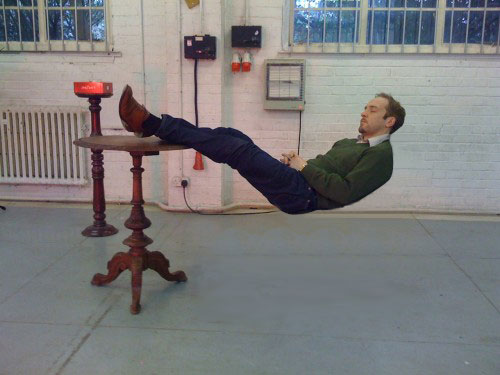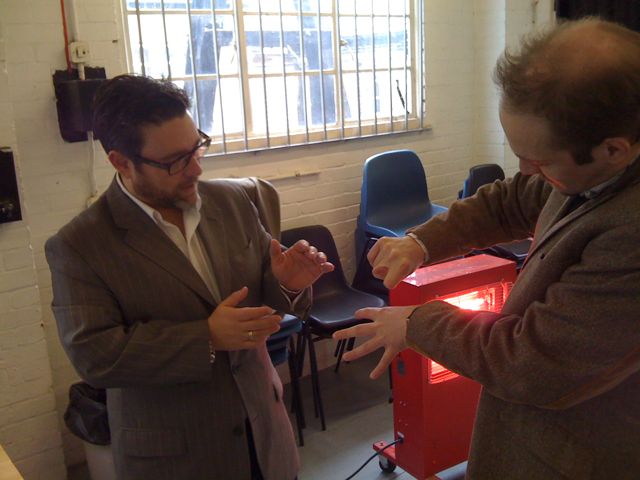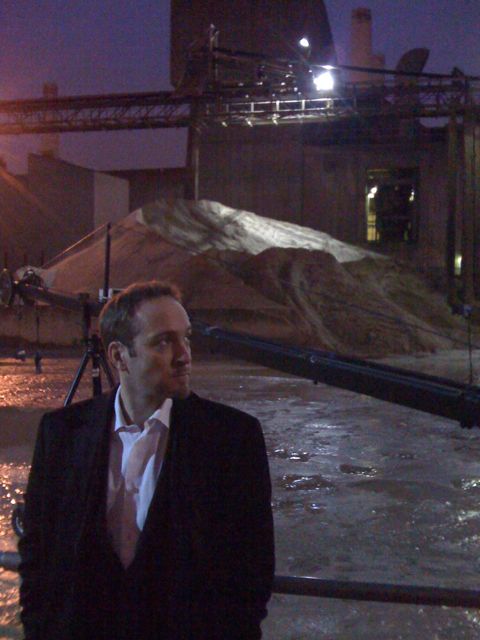Few thoughts on pareidolia
Pareidolia is the name given to our tendency to find significance in random stimuli – most commonly our tendency to see faces and people where there are none. Richard Wiseman’s huge collection of ghost pictures is largely a celebration of this fascinating phenomenon, and it also seemed to be a sensible – and often obvious – explanation behind a collection of ghost pictures I was shown recently as part of a documentary. Of course, for evolutionary reasons, we are hard-wired to veer towards the ‘false positive’ of seeing faces or people where there are none, as it is helpful to be over-sensitive to the presence of a possible predator. For this reason, we might mistake shadows for a burglar, but rarely a burglar for shadows. Also, it only takes a couple of dots and a line underneath for us to see a face and respond to it as one; hence the easy emotional grammar of smilies. Imagine trying to portray a church, or even a flower, or anything other than a face, with a couple of punctuation marks.
So here’s my favourite example, which a few enthusiasts amongst you might know. We see a sort of huge Jesus-face between the man and woman in the photograph, and it’s very hard to snap out of it and see the actual subject: a Victorian toddler in a white bonnet being held by her father. The vegetation in the background appears to be hair in the foreground, and we’re seduced by our evolutionary preference for seeing a face. Have a look and work it out:
Aside from how fun it is to have our minds toyed with in this way, it’s a great lesson in how this kind of thing can fool us. In this picture, we know it isn’t a ghost. Partly this is because no-one’s saying it’s a ghost, but also we understand what the real subject is supposed to be, because when we eventually work it out, we have a solid alternative figure – and a far more plausible one – looking back at us in its place. Yet, had the illusion been created not by a little girl, but by the interplay of branches, shadows, light, water ripples and so on, (which would be just as likely to happen), there’d be no clear alternative emerging figure to ‘prove’ the illusion wrong. And thus, a ghost-believer might laugh off the picture above as an optical illusion (caused by the light and shadow of a little girl) while insisting another is real evidence for the supernatural (caused by light and shadow of a noisy background).
Another point worth remembering is that out of the millions of photographs or pieces of footage taken where these illusions are present, there will naturally emerge a few which are as convincing as the one above. That has to happen – as some have to be better than others, and a few have to be the best. So just because some ghost pictures are very striking, and where the suggestion of random light and shadow forming a face might sound like the most blinkered cynicism, this does not mean you have to throw up your hands and admit a ghostly presence. It might be a ghost of course, in the same way it might be digital manipulation or a missed real-life intruder into the frame, but there’s nothing wrong with it just being one of those have-to-occur great instances of pareidolia too. Logically, there have to be some very convincing ones out there. Start with enough photographs being taken, and you’ll end up with a small number of absolute doozies.
More importantly, though, these are huge fun. Do check out Richard Wiseman’s ever-changing online collection if you haven’t already.
x




